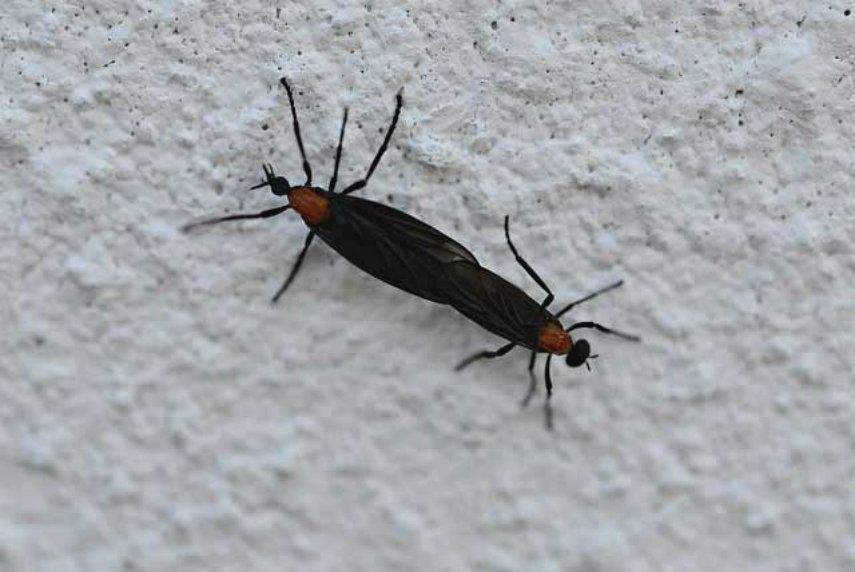This particular piece I decided not to include for two reasons: 1) with so many things that readers might want to explore in the Tampa Bay Area, I didn't think it was the right choice to include something that they would probably rather not experience, and 2) the phenomenon known as "lovebug season" isn't really specific to Tampa Bay - the nasty little things can be found in multiple states throughout the southeast and along the Gulf coast. They are presently out in force, so it seemed like the ideal time to share this with you.
Insectile Orgy
of Death
What are all
those nasty-looking little things stuck to everyone’s front fenders and
windshields?
The subject of this chapter highlights not something you’ll likely want
to rush out to experience for yourself, but rather something you might prefer
to avoid, if you can. And it revolves around the two words that makes
motorists, visitors and even long-time residents consider an indoors activity:
lovebug season.
The first documented reference to lovebugs (Plecia Nearctica) along the
Gulf Coast can be traced to Louisiana in the early 1900’s. At the time their
known habitat included Florida, Texas, Alabama, Louisiana and Mississippi.
Since then they have spread to Georgia, South Carolina and elsewhere.
Most years see two lovebug seasons, each lasting a few weeks. Typically
the first season occurs sometime in April and the second around late August.
During these periods, millions of these sex-crazed insects will mate and
remain conjoined, even after one of the pair has died, and take to the sky.
Clouds of lovebugs will then hover lazily over any light colored or
light-reflective surface (including highways and cars).
They don’t pose any threat to humans as far as bites or stings –
although they do cause plenty of individuals to swat at the air and themselves
as if suffering from a fit of the world’s worst dance moves. They are also a
nuisance to drivers against whose windshields they tend to splatter, and due to
the acidity of their body chemist, if not removed fairly quickly from
automobiles, their remains become exceedingly difficult to wipe away.
Despite evidence of natural migration, there remains a persistent myth
that lovebugs were genetically modified and introduced to the area (either
accidentally or intentionally) by the University of Florida or some other
research organization in a failed attempt to curb mosquito populations.


Know your amorous insects: Lovebugs are annoying but harmless. Kissing bugs, on the other hand, are nocturnal, bloodsucking parasites that carry an inflammatory infectious disease which can be deadly.
Public
Display of Annihilation
What: Lovebugs
Where: Everywhere you least want them to be.
Cost: None, unless you factor in the cost of a good carwash
Pro Tip: Bug repellant won’t keep away lovebugs, but it will help with
mosquitos and biting flies. Always keep some handy.
|
No comments:
Post a Comment